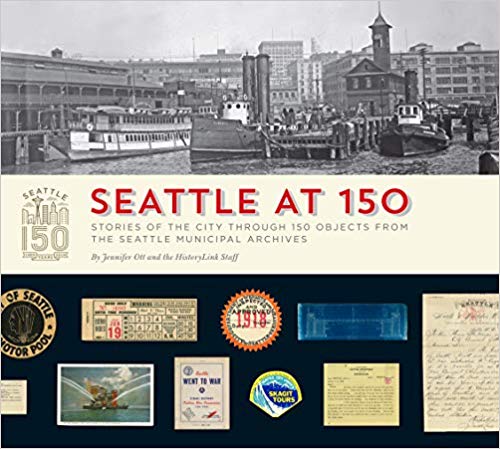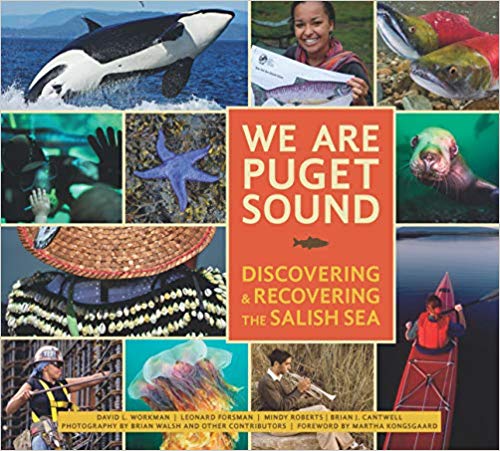The gift that keeps on giving
We all had the experience: You're in a bookstore. A big book snags you by the eye. You pick it up. It's beautiful: full of pictures, about a subject you find interesting. You flip it through. It's heavy! It's packed full of what feels like a whole new possibility for you: a world in which you know more than you ever thought imaginable about a very specific topic — something you never knew that you wanted to know about until right now.
You've always wanted this book.
You turn it over.
The price.
You put the book back on the shelf. If you're like me, you're hoping that someone is taking note of your dalliance with the book, writing the title down somewhere so they can give it to you as a gift for the holidays.
There's something so satisfying about getting a huge picture book as a gift — a book about some subject that interests you, a book you can dive into like a warm bath, again and again. To buy it for oneself feels like a grotesque indulgence; to have someone buy it for you feels a little bit like love.
Three large Seattle-centric books have been published this year that would serve as beautiful gifts for the Seattleite in your life. They're profusely illustrated, fascinating surveys of very specific slices of Seattle life, and they're sure to appeal to anyone who committed themselves to this city, by birth or by choice.
Written by the HistoryLink Staff, Seattle at 150: Stories of the City Through 150 Objects from the Seattle Musicipal Archives will appeal to anyone with an interest in the people and stories that helped to make this city. (It's already been recommended on this site by no less than Seattle Walk Report herself, Susanna Ryan.)
150 is sliced up into bite-sized chunks in a very accessible format: one the left page is a color photograph of some item from Seattle history (a notice of annexation from when Seattle absorbed Ballard, Columbia, West Seattle, and other neighborhoods in the expansion year of 1906; a photo of Sicks' Stadium, which was home to our first major league baseball team, the Pilots ) and on the right page a few paragraphs of context and illumination.
In addition to its you-were-there tour of important moments in Seattle history, 150 is noteworthy because it provides a sketch of how much paperwork it takes to build a city — how many forms and regulations and proclamations a city accrues over the years. All the contracts and deeds and posters aren't just the side effects of building a city; in fact, , in a very real way, all that paperwork is the city.
This isn't a whitewashed nostalgic tour of the good old days: 150 digs down into Seattle's bedrock of racism, the hate on which white settlers founded the city. Take, for instance, "Seattle Ordinance 694, enacted on November 24th, 1885, [which] masqueraded as a public-health measure, but the true intend was to force Chinese immigrants to leave the city." Considering that roughly ten percent of Seattleites at the time were Chinese, the hatred behind the bill is almost unthinkable — imagine believing that decimating the city was a positive action.
From maps of Seattle's newsstands to posters promoting a citywide for for flouridation to an electric-car charger from 1973, 150 depicts the Seattle we wanted to build, the Seattle we had to reckon with, the Seattle that would never be. It's perfect for dipping into on a chilly winter afternoon.
We Are Puget Sound: Discovering & Recovering the Salish Sea, by David L. Workman, Leonard Forsman, Mindy Roberts, and Brian J. Cantwell, with photographs by Brian Walsh and others, is a little meatier than 150. It's packed with full-color maps and photographs of the animals of Puget Sound.
Puget Sound has all the joys of a gorgeous photo book. There's an indescribable picture of the largest jellyfish in the world, the haunting lion's mane jellyfish. A beady-eyed American mink pokes out of a little cave in a picture taken on Orcas Island. One photo of a bear napping on a tree stump on the Olympic Peninsula, is one of the cutest bear pictures I've ever seen.
But there's a lot of text here, too. In addition to the narrative that describes the importance of the Sound and its ecosystem, Puget Sound is full of sidebars which offer magazine article-style profile of prominent ecologists, discussions of indigenous efforts to save the Sound for future generations, and a discussion of how educators use the Sound as a test case for interested students. The lsat half of the book serves as a travel guide of the best locations to enjoy the Sound's varied pleasures. It's a book you can read cover to cover or dip into from time to time.
As a transit nerd, the big book that most spoke to me this year was Transit: The Story of Public Transportation in the Puget Sound Region, by Jim Kershner and HistoryLink's staff. it is exactly what it sounds like: a thoroughly illustrated chronological attempt of all the public transportation in the greater Seattle region, from the canoes that traversed Lake Washington and the Sound all the way to the rapidly expanding Link Light Rail.
Seattle has had an affair with public transit for as long as the city has been here. We had a network of streetcars that ran all over the city, though the lines were poorly coordinated and often run by competing companies. There was a rail line that stretched north to Everett and south to Auburn. (That line still exists today, in the form of the paved Interurban Trails to the north and south of the city.)
Our history of transit is also a history of false starts and abrupt stops. Seattle voters failed to ratify progressive citywide transit systems on multiple occasions; it's impossible to picture the city as it might be now if those early Forward Thrust plans passed by popular acclimation.
Transit is an indispensable guide for Seattle strap-hangers. It tells the story of the city we live in now, with its impenetrable traffic and its brand-new 99 tunnel that inexplicably fails to include any lanes for rail and its light rail line that's preparing to transform the region for generations to come.
I do wish Transit had made more room for illustrations of the many transit maps in the book. It's hard to pick out individual stops on the streetcar lines that existed, or the citywide subway line that never happened. One of the biggest pleasures of transit fandom is to imagine what various neighborhoods would be like today had different lines been built at different times in the city's history.
It's almost time for a new year in Seattle. No doubt 2020 will bring successes and failures. Twenty years from now, people will look back and wonder how we allowed our housing crisis to grow out of control. They'll consider how we failed to act quickly enough on climate change. They'll consider the legacy of the transit system that we finally came together to build. They'll write books about us as we are now, and how we fit into the continuum of greater Seattle history. Let's hope those books are as thoughtful and as fascinating as these three.
Paul is a co-founder of The Seattle Review of Books. He has written for The Progressive, Newsweek, Re/Code, the Utne Reader, the Los Angeles Times, the Seattle Times, the New York Observer, and many North American alternative weeklies. Paul has worked in the book business for two decades, starting as a bookseller (originally at Borders Books and Music, then at Boston’s grand old Brattle Bookshop and Seattle’s own Elliott Bay Book Company) and then becoming a literary critic. Formerly the books editor for the Stranger, Paul is now a fellow at Civic Ventures, a public policy incubator based out of Seattle.
Follow Paul Constant on Twitter: @paulconstant
Other recent reviews
Talk about the weather
-
Interpretative Guide to Western-Northwest Weather Forecasts
March 27, 2018
72 pages
Provided by publisherBuy on IndieBound
The man show
-
The Sexiest Man Alive
October 01, 2018
72 pages
Provided by publisherBuy online
Accidentally honest
-
The Shame of Losing
October 01, 2018
264 pages
Provided by authorBuy on IndieBound


